The Dog Calming Code™ program is inspired by a dog trainer’s desire to connect and understand dogs. It's the program that will calm your dog, solve reactivity and make walks fun again.
YES, I WANT A CALMER DOG
Hi, my name is Dan, and dog owners affectionately call me Doggy Dan.
Because of my love for dogs, and my personal experience in transforming rowdy, misunderstood dogs to wonderful pets, I created this online dog training program to reach out more people across the globe.

In the past few years, this dog training program has helped more than 88,000 dog owners transform their pet’s behavior and their outlook to dog training.
But what does The Dog Calming Code really do? And is it the dog training online program that’s best for you?
Read on to learn more about this popular Doggy Dan training program.
Key Takeaways:
- Dogs don’t usually need more training. What they need is a dog training program that enables dog owners to understand and connect with their dog.
- The Dog Calming Code is created in a pattern that’s natural to dogs. Your dog can adapt fast because the program speaks their language.
- Common dog behavior problems stemming from anxiety and stress can be addressed by the Dog Calming Code.
THE EASY WAY TO TRAIN YOUR DOG
Table of Contents:
- The Dog Calming Code: What Makes It a Successful Dog Training Program
- What the Dog Calming Code Teaches
- 6 Common Dog Behavior Issues That Can Be Corrected with the Dog Calming Code
- The Benefits of The Dog Calming Code: 5 Reasons The Dog Calming Code Won’t Fail You or Your Dog
- The Dog Calming Code: Transforming Dog Behavior, Improving Dog-Owner Relationships
The Dog Calming Code: What Makes It a Successful Dog Training Program
If you’ve been asking yourself any of the following questions…
“When did I lose the love for owning my dog?”
“When did it stop being fun to have my dog around?”
“What would my life look like if I had a training manual for my dog?”

There’s a high chance that you are dealing with dog behavior that is more than what you have bargained for.
If you’re feeling this way, I first want you to know YOU’RE NOT ALONE. Despite our best efforts, we sometimes just don’t know how to live with our dogs.
You see, we are often led to believe that dogs will listen and respond to us like other humans do.
But here’s the truth: we can’t use human language or human psychology with our dogs. Our dogs don’t automatically get our language — their own language and dog psychology is what we need to learn.
The Dog Calming Code teaches both new and veteran dog owners how to communicate with dogs, how to connect with dogs, and how to create an ideal relationship that makes training easier.
REACTIVITY SOLVED (NO FOOD, NO FORCE)
What The Dog Calming Code Teaches
The Dog Calming Code program helps establish the very foundation of dog training: the relationship hierarchy that dogs are programmed to seek.
Dogs are pack animals. In the pack is where dogs find balance and purpose.
Take it from them and they’ll feel out of whack!

This online dog training program aims to help dog owners re-establish the correct leadership in the household.
When our dogs assume the role of the leader, they can become agitated, more stressed, more occupied to even behave the way you want, or listen to you.
Through easy, loving, gentle, but firm steps that establishes your leadership, the Dog Calming Code can assist you in having more relaxed, more gentle, more behaved dogs who are ready to obey, listen, and respect you.
6 Common Dog Behavior Issues That Can Be Corrected with the Dog Calming Code
From my experience as a dog trainer, I have heard of dog owners expressing their frustrations over BIG dog behavior problems.
I empathize with these dog owners, and I am always elated whenever I realize “Ah, yes! THE DOG CALMING CODE CAN RESOLVE THESE ISSUES!”

Here are six common dog behavior problems that the Dog Calming Code can help with.
Anxiety in Dogs
Do you have dogs who just can’t seem to relax? Do they exude energy that is always so high, you wonder if they'’ll ever learn to slow down?
Your dog might be an anxious dog. And it’s not just because the surroundings are stressful and busy.

Your beloved dog might feel that they have to be in charge. And a dog who thinks they are the “leader” of the house will always feel uneasy, and unable to relax.
Separation Anxiety
Because the dog thinks they’re in charge, they look at you like you’re their pup that they need to protect. When you’re away from them, they’re worried!
You should be under their care, but you’re gone from their sight! This can surely drive your dogs to be always on the edge!

This instinctual need to protect can lead to feelings of anxiety when the owner is absent, as the dog believes it is their duty to keep watch.
GET MY 5 GOLDEN RULES
Barking
Two types of dog barking are trigger barking and separation anxiety.
Trigger barking occurs when something sets off the dog, while separation anxiety causes continuous barking when the owner leaves, without any specific trigger.
Dog Recall Training Problems
When dogs struggle with recall training, it can be due to anxiety or lack of motivation.
Or most of the time, your dog doesn’t see ANY REASON to obey you.

Your dogs feel in charge, right? So they probably feel that there’s no reason to respond to your call.
Restlessness and Hyperactivity
Restlessness and hyperactivity in dogs can stem from pent-up energy or anxiety.
Food Aggression
Food aggression in dogs can be a concerning behavior that stems from anxiety, fear, or resource guarding.
Your dog could have gone through traumatic experiences around food.
REACTIVITY MASTERCLASS
The Benefits of The Dog Calming Code: 5 Reasons The Dog Calming Code Won’t Fail You or Your Dog
If you’re like most people, you’ve already tried a few ways to train your dog.
After all, from positive-only training using clickers and treats to more corrective methods such as using prong collars, and electric shock collars, there are a thousand things you can do to try and wrangle your pup.
Sadly, even with all of these gadgets on the market, there’s very likely still a BIG piece of the jigsaw puzzle missing.
Let me explain…
Trying to train a dog who is NOT FOCUSED ON YOU when it really matters is not a smart way to train him.
Put very simply…it’s much better to get him calm and focused on YOU FIRST.
After a decade of sharing this method with over 88,000 people online, I’ve come to realize that the missing piece is the The Dog Calming Code.
It’s this essential relationship element that needs to be put in place BEFORE you do anything else if you want to avoid going crazy in the process of training your dog!

What’s the benefit to you?
Well here are 5 things The Dog Calming Code will do that will TRANSFORM the way you view training your pup or dog, taking your results to the next level.
REASON #1 – The Dog Calming Code First of All Sets Up a New Healthy Relationship.
Feel like you are often clashing with your dog in terms of what you and they want?
Almost like you are on different pages?
There’s a high chance that you and your dog can’t connect with each other. There’s an underlying glitch and that is why everything seems like a struggle.
When you and your dog are constantly challenging each other, your relationship—like any human relationship—will become strained, and it loses some of its enjoyment.

As your frustrations with each other increase, it will eventually become impossible to work through training issues because both of you will be pulling in your own directions.
This is why setting up a healthy relationship with your dog is one of the most important things you can do as a dog owner—and The Dog Calming Code will teach you how to do just that.
When you get this bit right, EVERYTHING ELSE FALLS INTO PLACE, and training your dog is no longer a battle.
You and your dog will feel like you’re on the same page and working towards the same goals, and The Dog Calming Code will help ensure that your dog starts looking to you for answers and direction when it really matters.
DOGGY DAN'S CALMING CODE™️
REASON #2 – The Dog Calming Code Makes Training Easier.
Ever noticed how some dog owners have dogs who “listen” and are obedient, while others have dogs who have “cloth ears” and are disobedient?
This difference has virtually nothing to do with a dog’s breed or bloodlines. Rather, it has everything to do with the relational foundation that you have laid down for your dog.
You see, with a good, healthy relationship in place, YOUR dog will listen to you when it matters.

Instead of your dog doing his own thing, they will be watching you and focused on you and what you want them to do.
With The Dog Calming Code in place and a solid relationship set up, you’ll find your dog is LISTENING to you, wanting to FOLLOW your lead and TAKE DIRECTION.
And that makes for a much easier dog to train…
REASON #3 – The Dog Calming Code Is Totally Instinctive to Your Dog.
What many people love about The Dog Calming Code is that it makes sense to their dogs.
Dogs get it because the program follows WHAT IS NATURAL to dogs.
Imagine actually discovering how to speak your dog’s language! This results in a lot of fun for you both, and also a lot of connection.
With this program, your training is not going to be reliant on treats and food (although food treats can certainly be used and come in very handy)

And neither is it based on forcing your dog to change…
Instead The Dog Calming Code communicates to dogs in a way that they will immediately understand and love that they should be listening to you.
You won’t have to explain why to them or train them to understand it because it’s all what they know instinctively. How amazing does that sound?
Of course, your dog may be a little surprised at first to see you speaking their language and may test you on it, but none of it will miss the mark.
It’s important to keep this in mind…
Speaking your dog’s language is not like trying to train your dog to do something such as sit in the back seat of a car…that’s a great example of “dog training.”

Rather, it’s the natural way of communicating with your dog based on the way their brain is wired.
In fact, once I share The Dog Calming Code with you, you will start to notice everything I talk about happening when a pack of dogs gets together naturally. They all speak dog!
You’ll be a step ahead of all the other dog owners, able to explain what is really going on…
YES, I WANT A CALMER DOG
Another way of looking at it is thinking of it as dog psychology 101—It’s all about tapping into the natural instincts that your dog is born with.
When you see the world through your dog’s eyes… EVERYTHING CHANGES.
You will never see Dog Training the same way ever again.
REASON #4 – The result of The Dog Calming Code Is a Calm Dog.
Picture this…
Soon after putting The Dog Calming Code in place, you’ll notice that your dog is generally more focused on you and is far calmer.
And because your dog is now focused, watching and listening to you, he is able to switch off and not be so alert and busy the whole time.
Instead of feeling the need to patrol the whole property, listen out for danger, regard every new experience as a potential threat to the family, they can leave it up to you. You can say “I got this” and they can sleep the day away.
All of it seems to make so much sense to your dog, and he is much happier and calmer about life…
The result: Both you and your dog are very happy beings.

As the stress drops away, the frustrations and anxiety disappear, and your dog is more relaxed while at home, on a walk, or while meeting people and other dogs.
Because your dog is moving into a new place of calm, the old crazy energy is a thing of the past.
You have a relaxed dog who listens and is easy to train, and everything just becomes more enjoyable!
STOP REACTIVE LUNGING
REASON #5 – The Dog Calming Code Builds Tolerance
Last but not least, when your dog is in a chilled-out place over a long period of time, he automatically builds up more tolerance.
Put another way, the Dog Calming Code is the foundation of what I call a ‘Bomb Proof’ Dog. A dog who doesn’t react when something alarming suddenly occurs.

For example, instead of being constantly wound up with far too much emotional and nervous energy—like a coiled spring needing to run it all off every day—your dog will be able to rest and relax.
Of course, at places like the park, he will still be happy to run and play. But, the energy your dog will give off will no longer be nervous, crazy, manic energy.
And, at home, your dog will no longer feel the need to follow you everywhere, always alert—even when he’s lying down and supposed to be sleeping instead.
He will learn to SWITCH OFF properly.
With your dog in a relaxed state, things like a child playing, a squirrel running, or a friend coming over for a visit is far less likely to set your dog off.
Instead, your dog will be focused and relaxed, allowing you to take control of any situation that crosses your path.
And that, my friend, is the powerful effect of The Dog Calming Code.
STRESS-FREE WALKS
The Dog Calming Code: Transforming Dog Behavior, Improving Dog-Owner Relationships
To finally see your dog calm and relaxed after all those days of anxiety…
Connect with your dog without feeling the stress of power struggles…
And achieve the balance that brings the calm to your dog, and the peace to your household…
This is what the Dog Calming Code wants to give to every dog owner out there.
Don’t forget…

It is NOT more training that your dog needs; Rather it’s the knowledge of how to communicate with your dog that YOU are going to take charge that allows your dog to switch off, relax and calm down.
The Dog Calming Code gives you just that.
I wish you the best as you continue on your dog training journey.

~ Doggy Dan

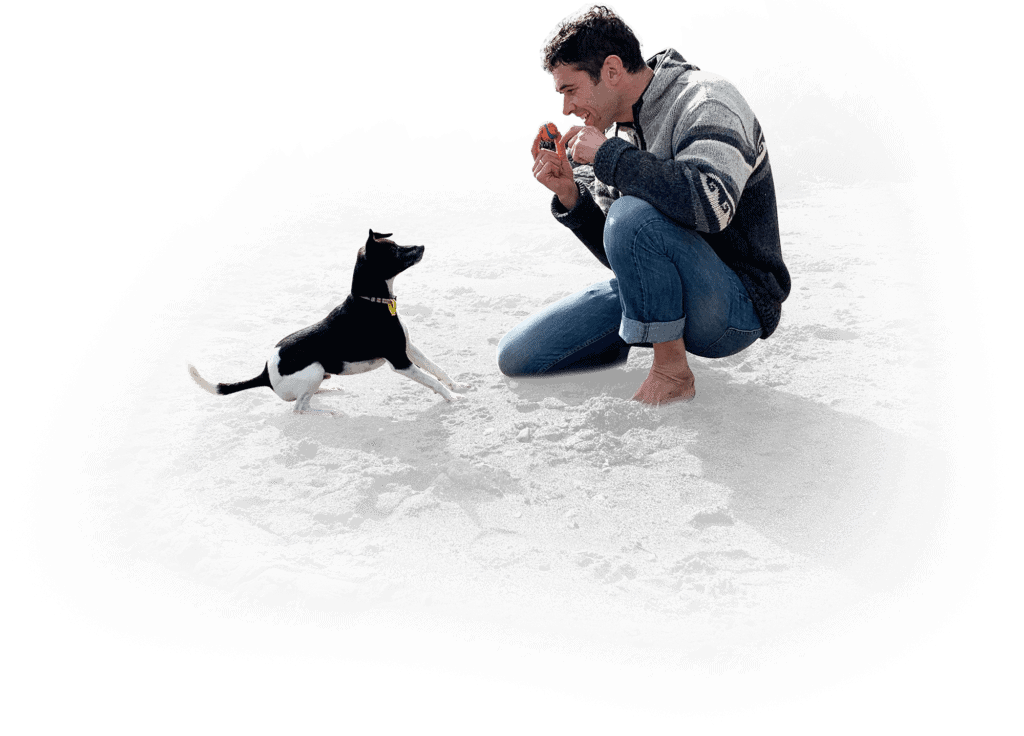
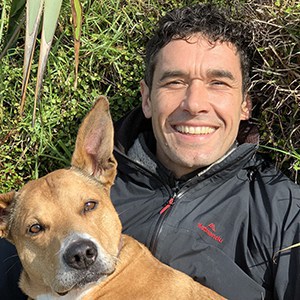

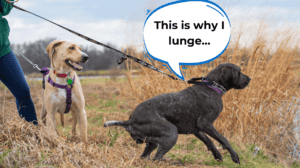
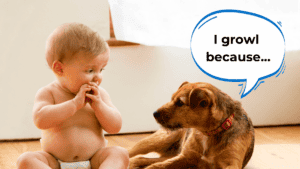
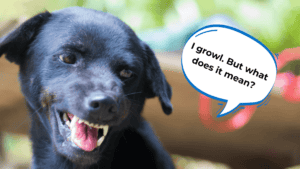
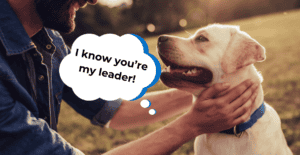
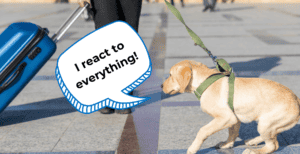
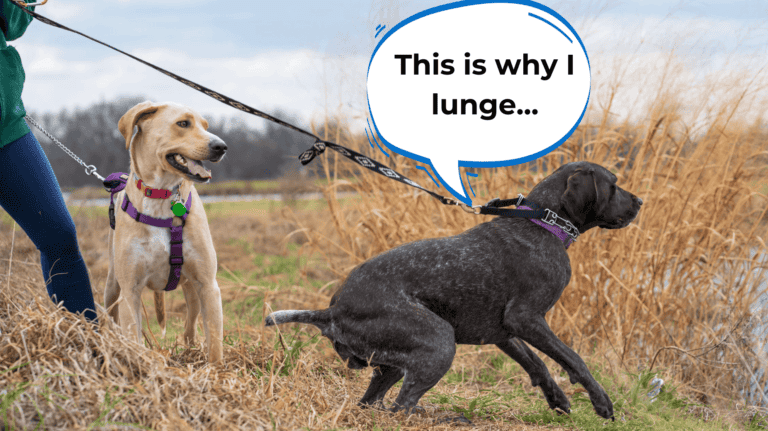
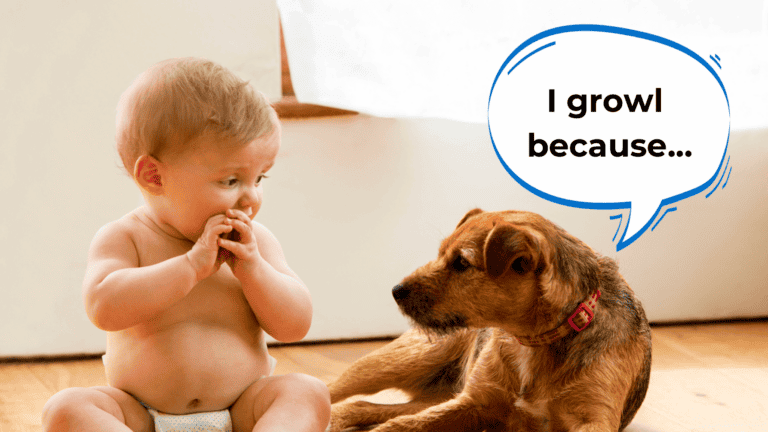
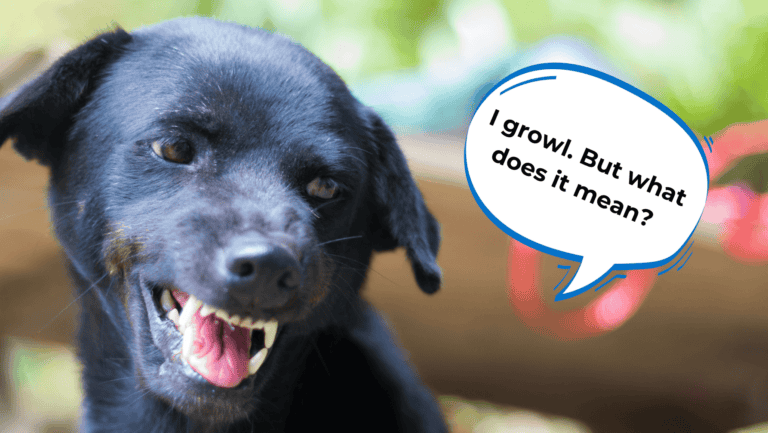

57 Responses
We have a 4 yo english lab. When we go to a town and walk around, we cannot leave his sight, he will start to cry and then it turns into a shriek, where everybody turns and looks. If one of us walks into a store, he will cry and pant at the doorway until we come back out and then he jumps on us in enthusiasm. At home he is a calm dog and when I walk him in my neighborhood, he is calm. But once we go to an area with stores and ppl-he pulls on the leash and is high strung. He is not fixed.
This is separation anxiety. Check out the free webinar, you’ll love it!
The Reactivity Webinar happens weekly on Wednesday and Sunday at 3pm EST (USA time). The link for the webinar is here, and you can choose this week or the following week: https://theonlinedogtrainer.com/reactivity-webinar/
If you register, you’ll get the recording via email after the webinar
I have 4 dogs 3 males one female. I brought one male and the female from GA when I moved back to NJ. The 2 males here are both massif mixes the other two are smaller mixes. The 2 I brought from Ga were anxious and afraid when we got here after 20 hours and the door opened to the big dogs. Problem is between the 3 boys the 2 bigger guys has attacked the smaller one 3 times tearing ears and both sides of his neck. I need to know if this can be fixed they are all reactive and anxious to each other have to be separated all the time. It isn’t fair to the smaller dogs being in a room when they are use to having the house etc. all four are five.
That’s not a good way for any of you to be living. Check out the free webinar. It’s a great place to start helping them. The Reactivity Webinar happens weekly on Wednesday and Sunday at 3pm EST (USA time). The link for the webinar is here, and you can choose this week or the following week: https://my.demio.com/ref/83RZTzAOfmGB8W6e
If you register, you’ll get the recording via email after the webinar
Hi! We just got a 4 year Shih Tzu named Spunky that had to be re-homed. I went to pick up Spunky. When I got him home he took to my husband but growls at me when I try to pet him or do anything with him. Is it because I took him out of his home? Also wondering what I need to do to gain his confidence so he will stop the growling. Can anyone help?
Head to my website https://theonlinedogtrainer.com. The Dog Calming Code course will be perfect for you
I have a 10 month old female cavapoo. She follows a few commands but the biggest problem is she growls at my live in boyfriends 10 year son. Doesn’t ever try to bite but tail goes down and she looks scared to death. I haven’t seen him ever do anything to hurt her so I’m not sure what’s going on. Please help…
Hi Paul,
It’s important to look at the scenario to see why your dog may be reacting. For example, is your BF son invading your dog’s space (going up to her) to try to interact? If so then it’s better that he only invited her to him if he wants to say ‘hi’ to her. Some dogs can be quite unsure about children, and it removes a lot of the stress if the dog realises that those children will respect their personal space. My website TheOnlineDogTrainer.com shows you very clearly how to achieve harmony between the two, maybe take a quick look. All the Best, Doggy Dan
I have a 3 year old Golden Retriever that is afraid of everything. I want to be able to take her places with me, but whenever I try she starts pulling me and tries to get back in the car. I’m not sure what I can do to get Sadie over her fears and enjoy going on outings with me. I love her so much and want her to enjoy going out and doing fun things together. I even have this problem going to the vet and the groomer.
Hi Debbie,
Dogs with nervous personalities can feel really unsettled and overwhelmed in the world outside their home. The first thing that will really help your dog’s confidence grow will be that she starts to understand that you are the one she can trust to keep her safe….which at the moment she is not completely sure is true. My Dog Calming Code (DCC) is designed to teach owners how to show their dogs that they can trust their human to keep them safe. When your dog starts to trust you then she will feel more comfortable in unpredictable situations….but you will also need to help transition her into those spaces in a way that respects how she is feeling. Time & patience is the key here! All the Best, Doggy Dan
Could you use a tie out method when working through the calming code with a dog? Just so they don’t have as much space to knock someone over?
Hi Allie,
If you have a guest come over then it’s a great strategy to have your dog on-leash if you are worried their excitement may be too high. It’s still important that your guest (and you) avoid interacting with your dog until they have calmed down completely. If you feel you need to give them a Time-Out then you can easily do that with your dog on-leash. Hope that answers your question…All the Best, Doggy Dan
Hi Dan! My dog Maxeen is very aggressive when she sees another dog 10 to the 100 feet’s away as soon she hears a bark and bikes and crowed of peoples, jaggers too. She is a Brendle Lab lots of fun to play with. Any suggestions would be appreciated.
Hi Blair,
Maxeen’s behaviour is one we get asked about quite a lot. In fact, I have just put together a great training program to help owners of dogs who behave this way.If you head over to my website (theonlinedogtrainer.com) you will be able to see how I can help you, and more importantly Maxeen! The good news is that these behaviours are absolutely ones that can be overcome……but you need to understand why she is doing it AND the correct way to overcome it for the long-term. All the Best, Doggy Dan
I have female yorkie, when she went through her first period, starting being aggressive. I had her spaded people said she will calm down, but she has not. She’s on medication for pain of surgery, I try to feed her and becomes very aggressive. I don’t know what to do, she was a good. Puppy until her period. Please advise. Help
Hi Linda.
It’s really common for a dog’s behaviour to change when they reach sexual maturity. They suddenly feel like they have a lot more responsibility and this can cause them to become overwhelmed and prone to over-reacting. Unfortunately spaying/neutering is not the cure-all solution that everyone believes that it is, in terms of addressing behavioural issues. The most effective way to solve behavioural issues for the long-term is to address the actual cause of that sense of responsibility…..but in a way that is relevant & makes sense to your dog! My website TheOnlineDogTrainer.com shows you very clearly how to achieve this…maybe take a quick look! All the Best, Doggy Dan
Hello, I purchased the dog calming code, and after listening to the videos I’d like to go over them again, but can’t seem to access them… Is it possible to do this ?
Thank you… it was great, I learned a lot, but would benefit from hearing them a second time.
Eileen Linfield
I have a 24 week old Aussie/Collie who grows and has lunged at my 4 year old. When he was 11 weeks old he bit her nose while he was laying down. He has a problem with resource guarding food and toys, in and outside of his crate. The vets and trainers say it’s probably a genetic problem or a lack of care from the breeder. We seem to have no other option but to relocate him. Other than that he is great with us and the kids. Everything in us wants to keep this dog but we’re afraid it may be irresponsible to do so…is there hope for him at all?
Hi Andrew, when it comes to this type of behaviour supervision is key when dogs and children are together. Some dogs can find young children really unsettling as they find children to be unpredictable, they make strange noises, have higher energy levels to adults. No matter how well behaved a dog is I always teach children to not approach a dog when they are eating/sleeping/resting, and if the child is too young to understand, or I cannot supervise them, then I separate the dog from the child. It’s important that dogs feel they have a safe space where they can rest & eat in peace, and that interactions are also respectful. I do think there comes point where safety has to be paramount and if a dog is struggling with young children in the family then that needs to be a high priority. All the Best, Doggy Dan
Hi
5 months ago we re homed a 4 year old female frenchie. Over the last few weeks she keeps getting aggressive with my husband, it is mainly when he is trying to leave the house or if she thinks he is going to leave when I am at home. When I am not at home he can go in and out as much as he likes. We have tried calming tablets, plug ins and a collar which seemed to make it not so often, but she is still doing it from time to time. Could you advise what else we can try? Thank you
Hi Lyndsey,
It’s not clear from your comment how this aggression unfolds exactly. For example is your husband trying to interact with your dog prior to leaving the house, or is he just leaving and your dog approaches him aggressively. One things some dogs can do when they feel a sense of responsibility for their family, is try to control when they leave the house in an attempt to keep them safe. Your dog may feel that the outside world is a dangerous place and that your husband would be safer if he stayed at home……hence she is trying to prevent him from leaving.
This is a behaviour that I can help you with, and my membership website TheOnlineDogTrainer.com will show you exactly how to do that…..maybe take a quick look! All the Best, Doggy Dan
My husband and I have had seven labs over a time period of about thirty years. One difference is we got them all as puppies. We recently got a rescue nine month old seventy pound male yellow lab. We have never had the problems we are experiencing now, matter of fact we’ve had people ask us how we had such well behaved dogs, I just shrug my shoulders and say we just treat them like family. I’m sure there’s more to that but now, oh boy. I guess the biggest problem is jumping up on people. Also he wants constant I mean constant attention, which we understand because of his prior living conditions of much of the time living in a kennel, indoor. I know people will disagree but none of our dogs lived in an inside or outside kennel, I personally don’t care for that. I never thought I would seek outside help for training, oh and by the way he is pretty much an angel riding in the car. Help!
Hi Robyn…..one thing we often forget to factor into a dog’s behaviour is their personality. Like humans, dogs have their own unique personality and that is a big factor when it comes to behaviour. I’m not sure how long he’s been in your home but a lot of the behaviours you mention are common ways that a dog will try to work out where they fit in their new pack/family and what their role might be. The good news is you can turn this all around by giving him the right information when he starts to misbehave. I have written a Blog about dogs who jump up and how to respond but My website TheOnlineDogTrainer.com shows covers this issue in more detail…maybe take a quick look…we have a great trial offer on at the moment…all the best Doggy Dan
Hi Dan my puppy is 11 weeks old can u plz help she has like a happy hour wen all she does is bark and bite
Hi Rosa….this is actually a really common thing for puppies to experience, in fact it’s often known as their ‘withing hour’! Sometimes puppies can become over tired/stimulated and this can lead to bratty behaviour. For this reason I encourage owners to make sure their puppies are getting enough sleep/rest during the day……so trying to tire a puppy out with too much play can be counterproductive. If your puppy is going through an episode then try placing her in her crate/pen to chill out for a bit. She may initially protest so it’s ok to give her a chew/toy to encourage some calmer time. Hope that helps! All the Best, Doggy Dan
Hi Dan my puppy is 11 weeks old and sleeps with me on my bed I have tried to get her to sleep in the laundry but cries for hours so I put her in with me can u help plz
Hi Rosa….Generally my advice for puppies who cry when put to bed is not to go to them. This may sound like a horrible thing to do but if a puppy realises that crying gains attention then they will continue to do it. make sure your puppy has a warm, safe place to sleep and somewhere to toilet and then ignore her cries. When she realises that crying will no longer see you come to her then she will be less inclined to do it. I will say though, if your puppy is crying beacuse they need to go to the toilet then you can respond to this, just limit your interaction with them as much as possible.
If your puppy is really anxious and panicked then there is another option. I’m not sure if your puppy is crate trained but you could try moving her crate into your bedroom and when she is a little more settled sleeping in there you can gradually move her out of your room to the location you would prefer her to sleep. I usually recommend this as a bit of a circuit breaker, where a puppy is so triggered by sleeping in another room that they totally freak out. We allow them to sleep in the crate in their owner’s room just so they feel more calm and at ease.
The Perfect Puppy Program on my membership website TheOnlineDogTrainer.com covers this issue in far more detail, maybe take a look! I have also written a Blog about this behaviour. All the Best, Doggy Dan
Got a cockpo miniature for my grandson who lives with us he has spe needs keeps nipping him and biting his clothes really don’t no what to do
Hi Patricia,
My Puppy Coach program covers mouthing/biting and will help you with strategies to help stop this behaviour.
https://theonlinedogtrainer.com/sp/lp-wf-puppy-coach-27/
I have also written a Blog related to how to stop puppies from mouthing/biting, maybe take a quick look!
https://theonlinedogtrainer.com/how-to-stop-puppy-biting-and-mouthing/
Hope that helps! Getting on top of this behaviour is quite easy, with the right approach. All the Best, Doggy Dan
I’m looking at your dog calming code will it also help with my granddaughter’s 11 month old Akita who barks when in the garden at everyone who goes by its not just driving me but the neighbours mad as well.
Hi Lily,
The DCC does have a section dedicated to dogs that bark at things around the house, garden and on a walk. It will explain why her dog is barking, but most importantly it will show her how to respond correctly to help her dog stop barking. I have also written a Blog about how to stop a dog from barking, so maybe check that one out too! All the Best, Doggy Dan
I have a 2 year Pyrenees/pit mix and for the first year and half everything was fine. My wife’s brother moved back home with his biological brother and now he wants to really fight his biological brother and his house brother but he doesn’t even bother his sisters. It started out once a week and now he has to wear a muzzle bc it’s an everyday occurrence. I have spent thousands of dollars repairing ears where he bites them and won’t let go. We don’t know what sets him off or what the reason is bc he was fine before they moved back in. I’m pretty sure that is what started it!
Hi CJ….when there is confusion around leadership it can lead to dogs that live in the same household fighting, particularly if they are the same sex. In a canine pack/family there is only one male leader and it is common for them to be challenged for that position at times of change or when younger dogs mature. So this certainly explains the cause of your dog’s aggression towards his new packmate. The key to calming everything down is to show both dogs that they have nothing to fight for because the leadership role is filled by you….doing that is not as complicated as it sounds and it can be done in a very calm and effective way. My website TheOnlineDogTrainer.com shows you very clearly how to achieve this…maybe take a quick look…we have a great trial offer on at the moment…all the best Doggy Dan
After recently losing my 12 yr old sheltie, my other dog seemed lonely. I decided to adopt a dog from the humane society. A couple days ago, I got a female 2 yr old lab mix. Things seemed to be going ok. My other dog would show his teeth if the lab got too close and playful, and she would back away. We were able to walk them together each morning, feed them together, and they even slept side by side without an issue. Then today, twice my male would growl and show teeth to get the lab to back off, and instead she became aggressive and I had to crate her.
I really want them to get along, and I don’t want either dog to get hurt. Do you have any suggestions to help get her behavior under control? The dogs are similar in weights but she is taller and faster, and likes to jump up and paw at him. She is also mouthy. I am working on the jumping and nipping, but I want the dogs to get along.
Hi Jane,
It’s really normal when integrating a new dog into the family that any existing dogs will also need a little time to adjust. Both dogs will be trying to work out where they now fit in the family, and what their role is. Your new dog will also be feeling quite vulnerable and so she is more likely to over-react. My advice would be for you to really take the time to calmly guide both of your dog’s behaviour. It might also make this easier if you have your female Lab on-leash and with you, or at the least have a long-line attached to her collar, so that if you need to you can calmly and quickly gain control. If you see any unwanted behaviours, or you feel she is being a bit too pushy, then calmly move her away from your other dog. If she is being really insistent then you can even put her out of the room for a few minutes so that she learns if she does those behaviours she will end up on her own. There is not need to get upset yourself…..just let your calm and consistent actions do the work for you.
I also have a 5 part Rescue Dog blog series that you may be interested in! Other than that, my website TheOnlineDogTrainer.com covers this topic well…maybe take a quick look…we have a really great trial period on offer…All the Best, Doggy Dan
thank you very much for helping out by giving us the mastermind of owning our dogs behaviors…. but i Have a challenge here, how do you advice i keep the remaining dogs calm when I’m trying to have a one on one training or walk with just a dog?
Hi Samuel,
Maybe try putting your other dogs out of the way when you are doing some one-on-one training with one of your dogs. If they are barking inside and distracting your dog then that’s actually something you can use to your advantage….because the world is full of distractions and you won;t have to go very far to find some to train with! Hope that helps! Keep up the great work, Doggy Dan
I have a 14 year old male Shih Tzu who has become aggressive nipping people and me for no reason. He’s my 1st dog and I had no idea how to train him. When I’m alone,he’s excellent and.I recently moved in with my niece who has 6 kids and he’s been growling and nipping when they simply try to pet him. He does not listen to me when others are around. He’s been with me 24/7 since he was 4 1/2 weeks old.I don’t want to put my baby downI’m disabled on a very low budget,so I don’t think I can afford this program.if there’s a way you can help save my dog PLEASE let me know.im mortified that he nipped my 4 yr old hand and I can’t allow that to happen but it would truly break my heart to have to put him dow. If there’s info that can help me save him please let me know.
Hi Arile-Ann,
As dogs age they can start to feel a bit more vulnerable and it can lead to them feeling defensive. From your dog’s perspective there will be a very good reason that he is nipping, it’s often a way they communicate that they want space or to be left alone. It will be helpful to look at the scenarios where your dog tends to nip so you can change the way he is feeling. For example, if he is biting people who approach him to give him a pat then ask them not to do that. Instead, have them call your dog to them…if he goes to them then he is happy to interact, but if he doesn’t then he is trying to communicate that he would rather be left alone. If you do want to learn more about your dog’s behaviour then you will find my membership website (TheOnlineDogTrainer.com) helpful, we have a special offer of $1USD trial for 3 days…All the Best, Doggy Dan
Hi my pug puppy is 14 weeks and have had him since 5th April. He bits, nips, grabs clothes etc. vet said to give him teething ring , when he bites I say baa and give him the ring. When he bites clothes spray him like vet nurse said, but he is starting to think it’s a game. He insists on peeing in his bed in his pen night and day. Even if we are outside with him for hours he waits till he gets inside and poos in the house and pees in his bed. He is sleeping better and last night woke me at 2 am and took him out for a wee. Next he woke at 4.15 am took him out and he did a poo, the. Wouldn’t settle. Hubby got up and took him out, didn’t do anything but he settled till 6 am.
We have just enclosed garden area where he was digging in dirt and when I tried to catch him he runs and won’t let us catch him. Need help.
Hi Dolores, mouthing and biting is a really common puppy behaviour and it’s important to respond correctly in order to overcome it. Adding energy to the situation or giving too much attention can actually make the behaviour more intense. We certainly want to guide the puppy’s behaviour but there is a right and a wrong way to do that. My membership website has a really comprehensive course to help owners raise happy and well-behaved puppies, we really do cover the majority (if not all) of the main puppy behaviours owners have concerns around……including the ones you mention! Maybe take a quick look at my website (TheOnlineDogTrainer.com)….we have a $1USD trial for 3 days so you can take a look and see what you think…All the Best, Doggy Dan
I have a 14-week old labrador retriever. She replaces my 13-year old that had to be put down recently. At times thisnew pup becomes very aggressive, lunging, jumping, biting and pulling on clothing – at least once or twice a day. I try stayingcalm and use time out but so far without success. It is quite scary, she really is aggressive and wants to bite. I am afraid to let my grandson near her
Pamela
Hi Pamela, young puppies can easily become overwhelmed or tired, and this can lead to the behaviours you mention. Make sure your puppy is getting plenty of rest, keep walks shorter in length and if you see she is becoming over-excited then calmly place her in her crate/puppy pen for a little time to relax. One other thing to be aware of, if you add energy to a situation where your puppy is acting out, then it often means the puppy gets even more excited. Learning to respond to these behaviours correctly and calmly is really important in teaching your puppy self-control. My website TheOnlineDogTrainer.com shows you very clearly how to achieve this…maybe take a quick look…it’s a $1USD trial for 3 days…All the Best, Doggy Dan
We have a one year old Yorkie male. He has become extremely barky, growly, and will bite. Will this information help him?
Hi Rhonda,
Understanding the circumstances around your dog’s behaviour is important as it will help identify what is motivating it. Our dogs try to communicate with us all the time but if we don’t understand their ‘language’ then it leads to a break-down in communication and a stressed dog. My website TheOnlineDogTrainer.com shows you very clearly how to understand your dog’s ‘language’ and it will help you address his unwanted behaviours…maybe take a quick look…its a $1USD trial for 3 days…All the Best, Doggy Dan
I have taken your dog calming course and working through it. They listen quite well and our walks are much calmer. Where I have issues is that I have two five month old puppies, sisters, and they like to play fight when I have them in the house. They become quite aggressive so quite often I have to resort to time out until they calm down. Also after living with us they are always barking at our cat and our older dog always snarls at them so I have to keep them separated. I can’t work with just one as the one left behind howls and drives everyone in the house crazy. So, for the most part working with both at the same time works. Any suggestions regarding how best to handle the aggressive play fighting? Any other suggestions would be most appreciated. The puppies are pomskies.
Hi Lil,
Play is a very natural way that dogs will establish a pecking order or hierarchy between each other and it’s perfectly fine to allow them to do that provided they do so respectfully. Keep an eye on them when they are playing, in particular their energy level and the style within which they are playing. If you see their energy level escalating too much, or they are behaving in a way you prefer they didn’t, then calmly intervene to help bring their excitement level down again. If they continue to play roughly, or they go too far, then a Time-Out can be a great way to encourage more self-control! Consistency is important for them to learn what is and acceptable play and what is not. All the Best, Doggy Dan
I have 3 adult dogs-2 large, one 25lbs.They all need to learn to walk on lead.Do I do one at a time in the yard with the others present? The Walk part of the code isnt quiet clear to me.I need it more broken down.
Hi Dirk,
It can be really beneficial to work individually with your dog, particularly if one of them tends to react and set the other dogs off. It will allow you to really focus on each dog’s individual behaviour, work them through it and then bring them all back together to practice with the 3 of them. However, if they are all pretty good on the walk together then you can train with the 3 of them at once.
We do break The Walk down into smaller stages on my membership website TheOnlineDogTrainer.com as it’s a fairly common issue…maybe take a quick look…its a $1USD trial for 3 days…all the best Doggy Dan
I don’t have a CD player so i can’t watch your videos. Is there any way I can down load your programs? My Buddy, a Maltese poodle is so sweet but when he meets a large dog on our walks he goes ballistic!
Hi Liz,
Unfortunately we don’t have a download option but our membership website allows you to access an extensive video library, and watch them anytime you like. It’s a $1USD trial for 3 days…all the best Doggy Dan
Dear Dan,
I did see you on Youtube and now I am here. I really want to do the dog calming code for my dogs, 3 years and only 9 weeks old ( Bouvier des Flandres ), but I do not have a credit card and Pay Pal.
I am honest, I do not want a credit card and Pay Pal, but I want to pay for the dog calming code and I don’t know how to do so. Maybe you can help me.
I live in The Netherlands.
Hope you can help me to get the dog calming code!!!!
Best regards,
Dick van Maanen,
Zevenaar,
The Netherlands
Hi Dick, if you send an email to our Admin Team [email protected] they will be able to advise you of any alternative payment options. Best, Doggy Dan
How does this method work with multiples? It is very hard to get either dog to focus on me when they are feeding on each other’s crazy energy…
Hi Deana,
Trying to work with two dogs who are over-excited is always going to be a challenge! For this reason it’s a much better idea to work with them when they are calmer or to work with them individually to start with. The main aim of the Dog Calming Code is to help dogs start to relax and bring their general level of excitement down. Once dogs start to adapt to the process then they are far more easy to work with. Best, Doggy Dan
I need to know WHAT the dog calming code is. He tells me what it does but what is it exactly. How do I use it? I can’t just buy it without knowing what it really is and how it is used. Okay, it works but how? Please give me more information about it. How do I use this everyday to get my 9 month old chipoo to stop pulling on the leash; barking, growling, and lunging, at people and dogs; pay attention to me when out of the house. She is terribly scared of other dogs and people but when they aren’t paying attention to her and are distanced, she acts aggressive towards them.
Hi Lu,
It can be really hard to provide all of the information about our Dog Calming Code in one Blog post. The program is comprehensive and is best applied in it’s entirety. We do have a special offer that allows you to explore my membership website and see how it all works. Just head to TheOnlineDogTrainer.com …and maybe take a quick look…its a $1USD trial for 3 days…all the best Doggy Dan